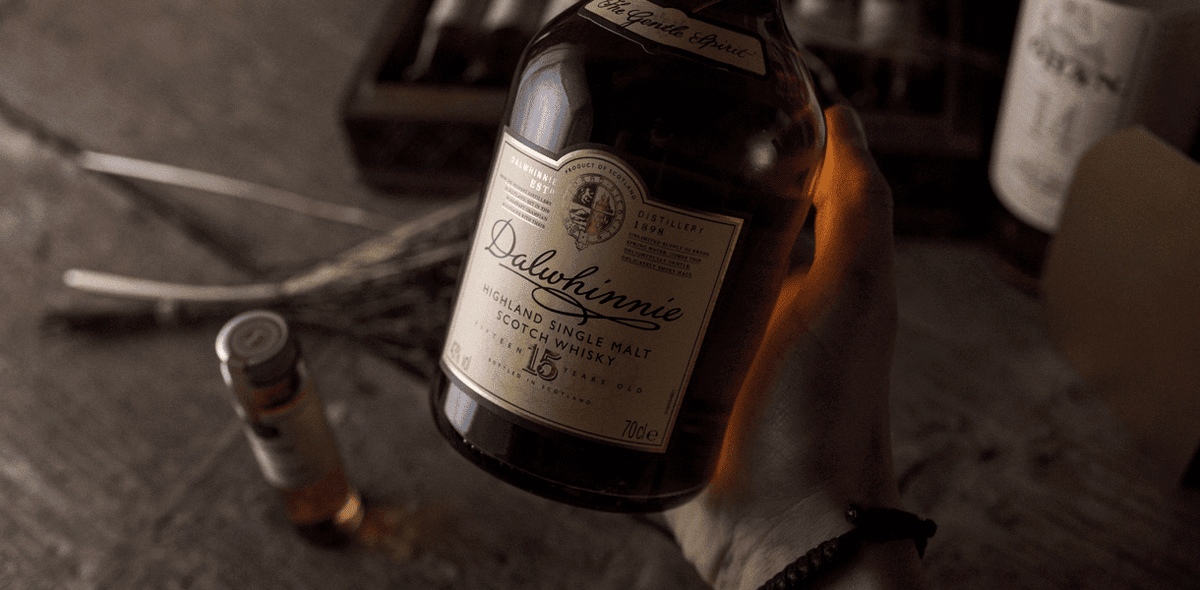
How To Read A Whisky Label And Understand Every Little Detail On It?
|
|
Time to read 3 min

|
|
Time to read 3 min
Ever been in your local off license (or liquor store if you’re states-side) and found it hard to pick between the Whiskies in front of you? How the hell do you understand their labels and the details they are trying to convey? By using our ‘how to read a Whisky label’ guide of course!
Lots to take in, but what do they all mean? By the bottom of this list you will know exactly how to read a Whisky label.
Simple one this; the distillery name is more often than not the brand name also. The exceptions here are if distilleries distill to sell on to blenders or bottlers such as Compass Box, Berry Brothers & Rudd, and Douglas Laing & Co, who buy casks to finish or blend to create unique products released under their name.
All Whisky must be aged in Oak for a minimum of three years. Bourbon has to be aged in new casks, but can be finished in others, whereas Scotch can be aged in any oak cask, although 90%+ are aged in used Bourbon or Sherry casks.
Ex-Sherry casks will add sweetness to the Whisky whereas ex-Bourbon casks adds an increased depth of flavour. Innovation trends are leading to some brands ‘finishing’ various Whiskies in different types of wood such as Port, Cognac and I have recently heard of one looking to finish their Whisky in ex-cider casks.
Simple one this... the age of the liquid in the bottle. Scotch Whisky law dictates that spirit is not considered Whisky unless it has been matured for a minimum of three years and one day. Single malts and blends facilitate easy navigation through the tiers of their products using clear age delineations.
Importantly, the age on the label refers to the youngest Whisky in the bottle, but there are more often than not samples from much older Whiskies in each bottle that create the complex flavours we all get to enjoy.
Remember though, Whisky only ages in oak, not the bottle so once bought it does not get older in maturation terms if left in the bottle for years.
Whiskies without an age statement are not to be ignored and given their increased prominence due to global demand outstripping the reserves of aged stock they will only become more prevalent on shelves going forward.
People all over the world like to drink Whisk(e)y and there are many nations that also produce it.
There are close to 30 Whisky producing nations in the world, each has its own characteristics and flavour profiles, well worth trying them all if you can to see what your natural palate prefers.
ABV is always expressed as a percentage. The percentage relates to the amount of ethanol vs. water in the liquid at 20°C so an ABV of 53% means that 53% of the liquid is ethanol and 47% is water, although there are also ‘congeners’, or flavour compounds that give Whisky its distinctive taste present too.
Typically unaged spirit comes off the stills at around 70-75% ABV which never gets to public consumption, for relatively obvious reasons. As the spirit moves towards the maturation stage the ABV is brought down to 40% (unless being specifically aged for a ‘cask strength’ release).
Cask strength means just that, it is the natural strength that a Whisky comes out of the cask at, normally between 58% and 65% ABV. Best tried neat then with a few drops of water.
In the UK the standard bottle size is 700ml (70cl), per EU directives of 1992, whereas in the US the standard size is 750ml (75cl) - they always like to be bigger and better. As an aside, miniatures are typically 50ml and in global travel retail outlets in airports globally the standard bottle size is 1 litre.
Whisky brands are increasingly releasing collections of Whisky products, both for the collectability of linked products as well as to take consumers on a journey of the senses.
Examples include Johnnie Walker’s Explorer’s Club Collection, Dalmore’s Constellation Collection and Glenfiddich’s Cask Collection.
Along with these ‘standard’ details, be prepared to find the occasional addition such as:
Bottler
Not all Whiskies are released by distilleries, independent bottlers (i.e. Douglas Laing & Co) create blends and release single malts as limited editions having bought casks from the distilleries.
Master Blender / Master Distiller
This is the person responsible for the creation, the consistency and the quality of the Whisky you are about to buy.
Cask number
For super premium Whiskies and limited editions they sometimes detail out the cask number and even bottle number.
Non-chill filtered
A process detail that tells the buyer that the liquid has not been processed or filtered at all and that what is in the bottle is exactly as it came out of the cask / vat.
Rare but occasionally present is the Kosher symbol / accreditation, look out for it on Glen Garioch, Ardbeg, Bowmore and Koval releases to name just a few.



